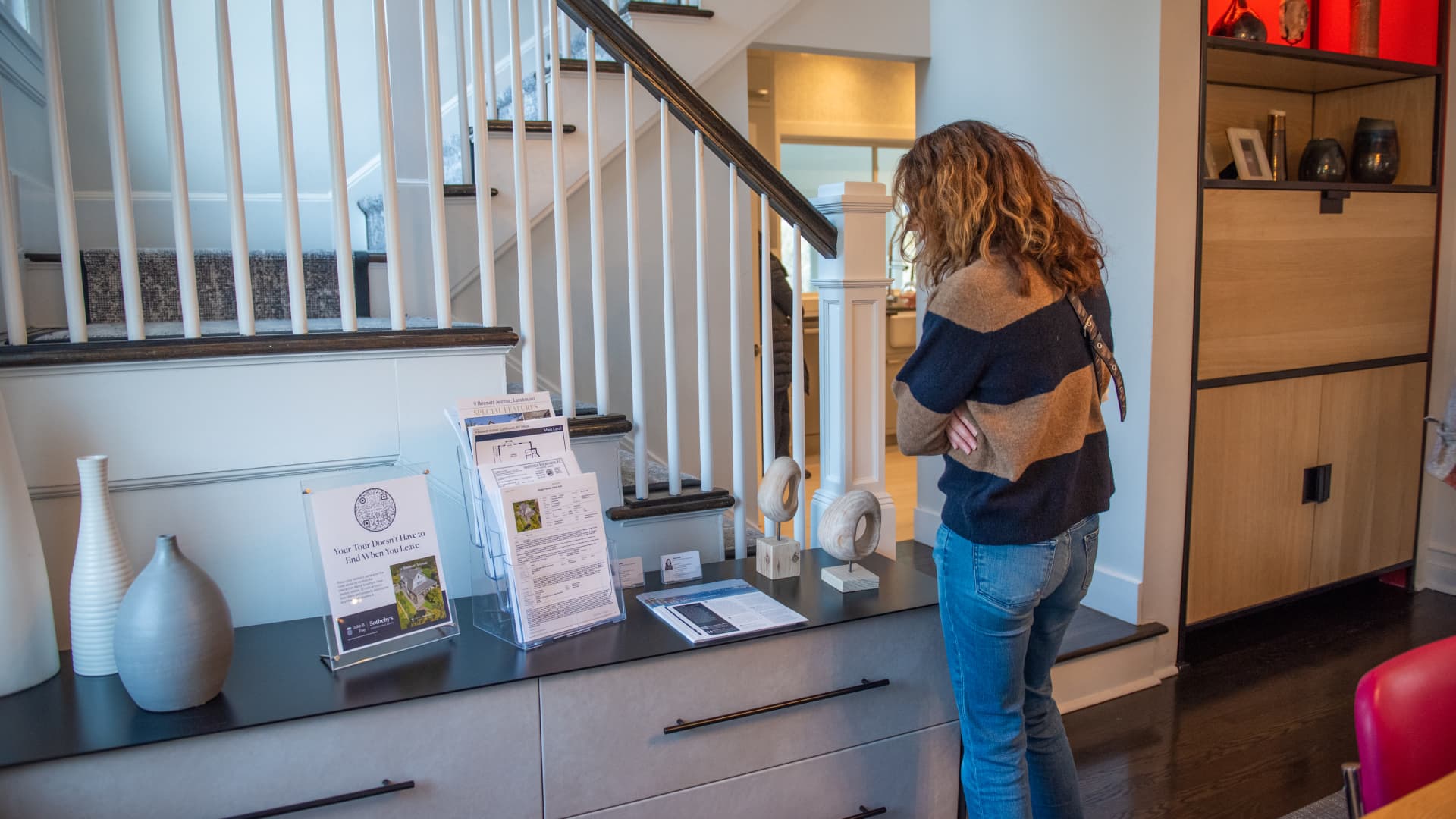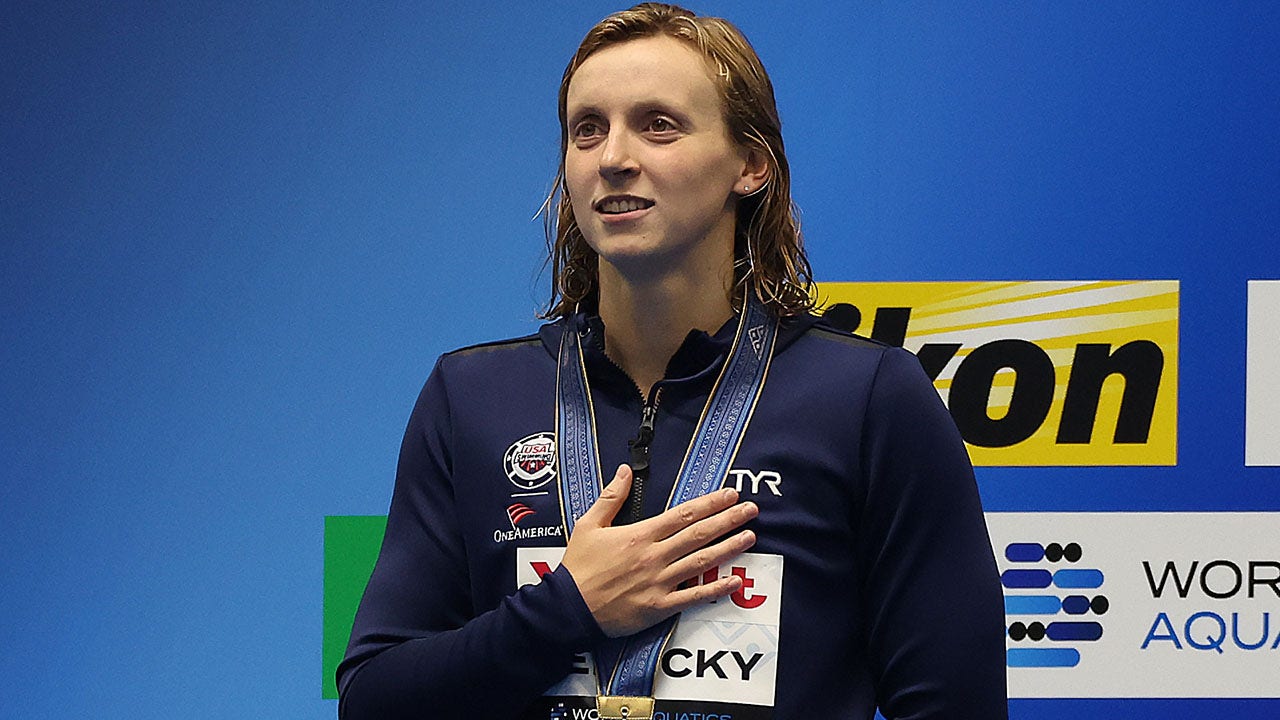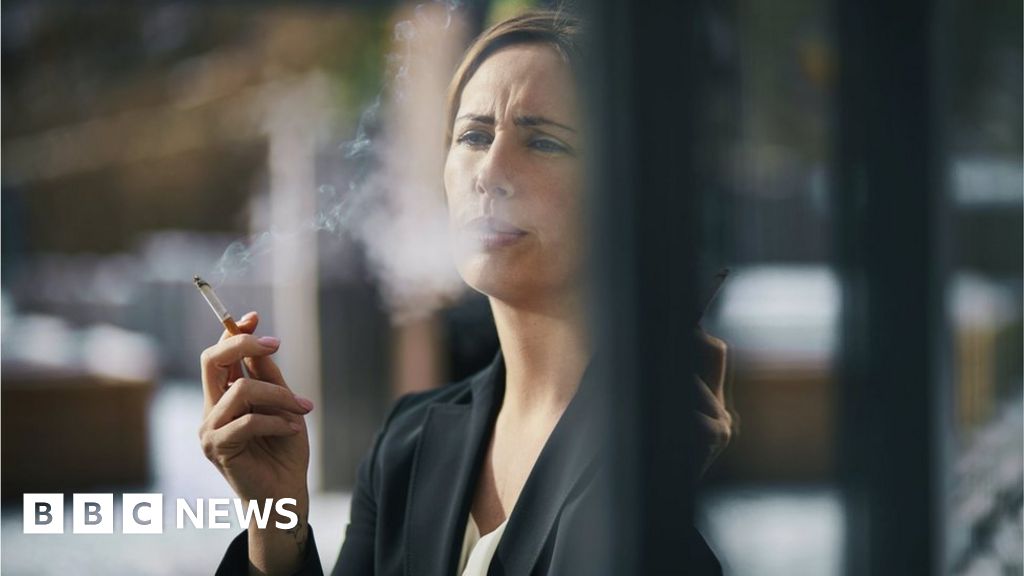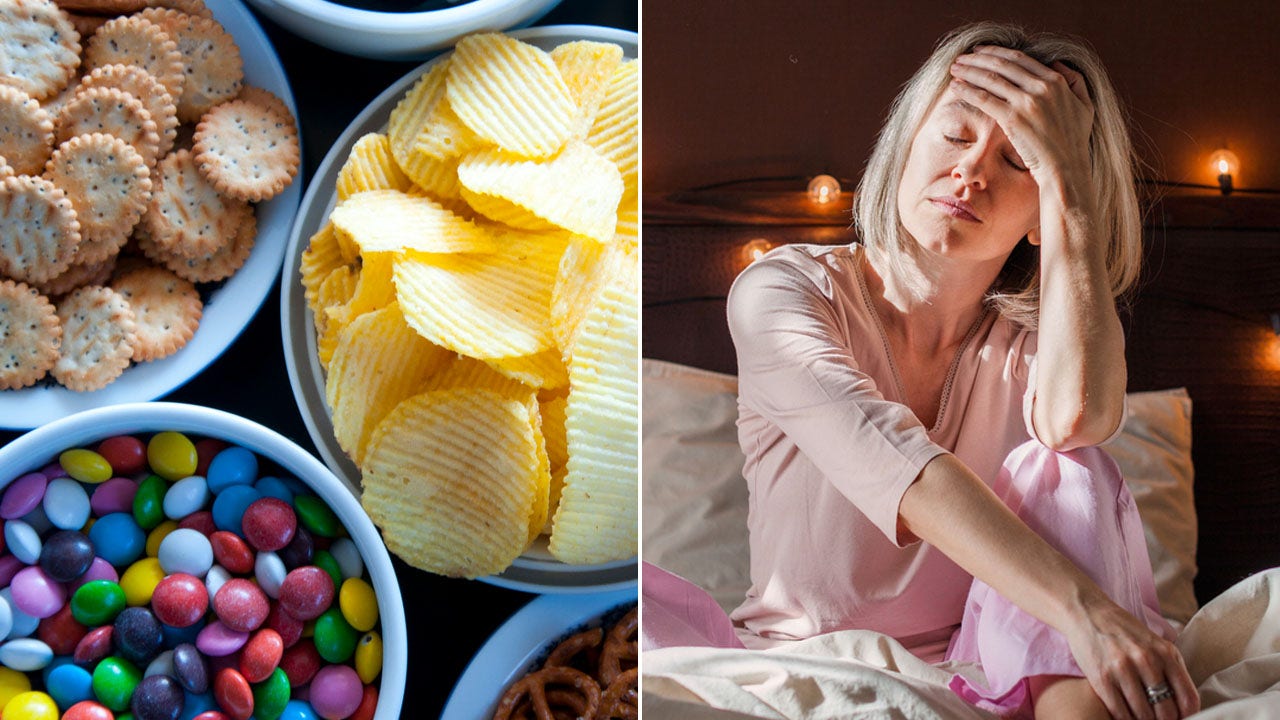Among them are Allen-Golder Carpenter’s white shirt copiously stained with fake blood — its title evokes JFK’s assassination — and Max Hooper Schneider’s scarlet diorama, which scrawls the word “blood” in neon in front of a hockey mask that invokes the Friday the 13th flicks.
Red is the show’s organizing principle, but not all the participants associate the color with violence. Despite being mostly crimson, several items have a coolly formalist vibe, including Shaun Krupa’s and Chino Amobi’s exactingly hyper-realist paintings of an auger and a flower, respectively, and Donald Moffett’s elegantly precision-cut wall sculpture.
Catharine Czudej’s homemade lava lamp, assembled from such ingredients as aluminum cans and brake fluid, is funkier but not ominous. Kris Lemsalu and Teruko Kushi’s clock, which intriguingly sets delicate porcelain against industrial metal, isn’t even exactly red, although it has a coppery patina.
Banality and brutality — and thus American pop culture, including horror movies — are frequent motifs in Von Ammon shows. All that and more are represented here. A woman suffocates a child in Alex Bag’s small found-doll sculpture, and Tony Hope’s Christmas-themed sculptural mash-up places a dispenser of red gumballs on a stand that incorporates red Christmas lights and a painted red plastic skeleton.
Gentler in tone if not implication, Ignacio Gatica’s LED piece is a landscape in which a yellow sun floats above red mountains. The pulsing lights might seem merely decorative, but in fact they denote live data on the prices of gold, silver and copper. In this case, violence is literally buried beneath the surface.
Focus Group IV Through June 11 at Von Ammon Co., 3330 Cady’s Alley NW.
The Superlative Artistry of Japan
A title such as “The Superlative Artistry of Japan” seems to promise historic pieces in indigenous styles, and that’s just what the introductory section of this exhibition at the Japan Information and Culture Center provides. The other works, however, give traditional aesthetics a variety of up-to-date twists.
A small gallery before the main one holds pieces by anonymous crafts workers from the Meiji period (1868-1912). Among them are two silk tapestries, elegant small models of crabs and clams made of metal or lacquer, and a large jar delicately painted with a tranquil scene of women in a garden.
Riusuke Fukahori employs containers of similar refinement, notably a lacquered bowl and a square wooden sake cup. But he fills them with paintings of goldfish rendered on layers of clear resin so that they appear to be actual creatures swimming in real water. Naoki Nishiwaki uses ballpoint pen to make astonishingly intricate drawings, sometimes on tinted paper that’s integral to the color schemes. One is a dense black-and-white landscape that on close inspection reveals itself as a mosaic-like array of tiny cats that spiral from one at the center of the composition.
Amid all the exquisite objects are works by artists who ponder the downside of making and having things. Satoshi Araki’s scale models of city scenes include one of the back of a modest building that faces an alley piled with trash. Kimiyo Mishima uses ceramics, an ancient craft, to simulate contemporary beverage cans silk-screened with labels in Japanese and English. She heaps these handmade vessels in a metal-wire trash can, where they offer ironic commentary on today’s surfeit of disposable stuff.
This is the first installment of a two-part show organized by the Japan Foundation. The second, which includes photography, performance video and handmade plastic food models, runs from June 16 to July 12.
The Superlative Artistry of Japan Through June 9 at the Japan Information and Culture Center, 1150 18th St. NW.
Much contemporary art is interactive, and that usually involves some sort of dialogue with a computer. The link is more physical in Matthew Russo’s “Practiced Play,” an art-schooled toy fair whose colorful knickknacks are only partly explicable. At the center of the frisky Hamiltonian Artists show are five green-turfed tables of differing heights. Visitors are invited to take objects from the surrounding shelves to the tables and, well, play.
The D.C. artist makes his trinkets from three substances: brightly hued foam and resin and gray concrete. The different materials can be distinguished visually, but the variations are fully appreciated only by touch. The foam is agreeably squishy, the resin is harder and heavier than it appears, and the concrete impressively weighty. All are cast or 3D printed in recurring shapes often derived from the natural world and yet cartoonish: Among them are a wishbone, a branch, a worm or snake, and a three-toed foot.
These playthings, of which more than 100 are on exhibit, are modeled on a catalogue of objects (shapes from the real world) or things (abstract ideas) assembled by Russo over years. The forms embody the artist’s thinking but await strangers’ intervention. Ultimately, Russo’s art is what its users make of it.
Matthew Russo: Practiced Play Through June 10 at Hamiltonian Artists, 1353 U St. NW.
Painter-collagist Meron Engida Hawke lives in D.C., but her pictures convey viewers to her birthplace, Ethiopia. Rendered in a flat, naive style that emulates her original homeland’s aged murals, the works in Engida Hawke’s Morton Fine Art exhibition portray women, children, animals and a traditional agrarian lifestyle where little things matter. Those include teff, the traditional grain whose individual grains are minuscule, and the tiny creature for which the show is named, “Hummingbird.”
Printed pictures of those birds, invoking a fable about their brave attempt to fight a fire with mere drops of water, are collaged into paintings made with acrylics and oilstick. Also incorporated are yarn, fabric, imitation pearls, rock-patterned wallpaper and — in two small sculptures — teff stalks that mimic human hair. The artist’s fresco-like style is functional yet poetic, much like the activities it is used to depict. Whether the subject is a noble lion, long a symbol of Ethiopia, or a humble gristmill, Engida Hawke’s pictures possess a strong sense of place.
Meron Engida Hawke: Hummingbird Through June 9 at Morton Fine Art, 52 O St. NW, No. 302. By appointment.















































